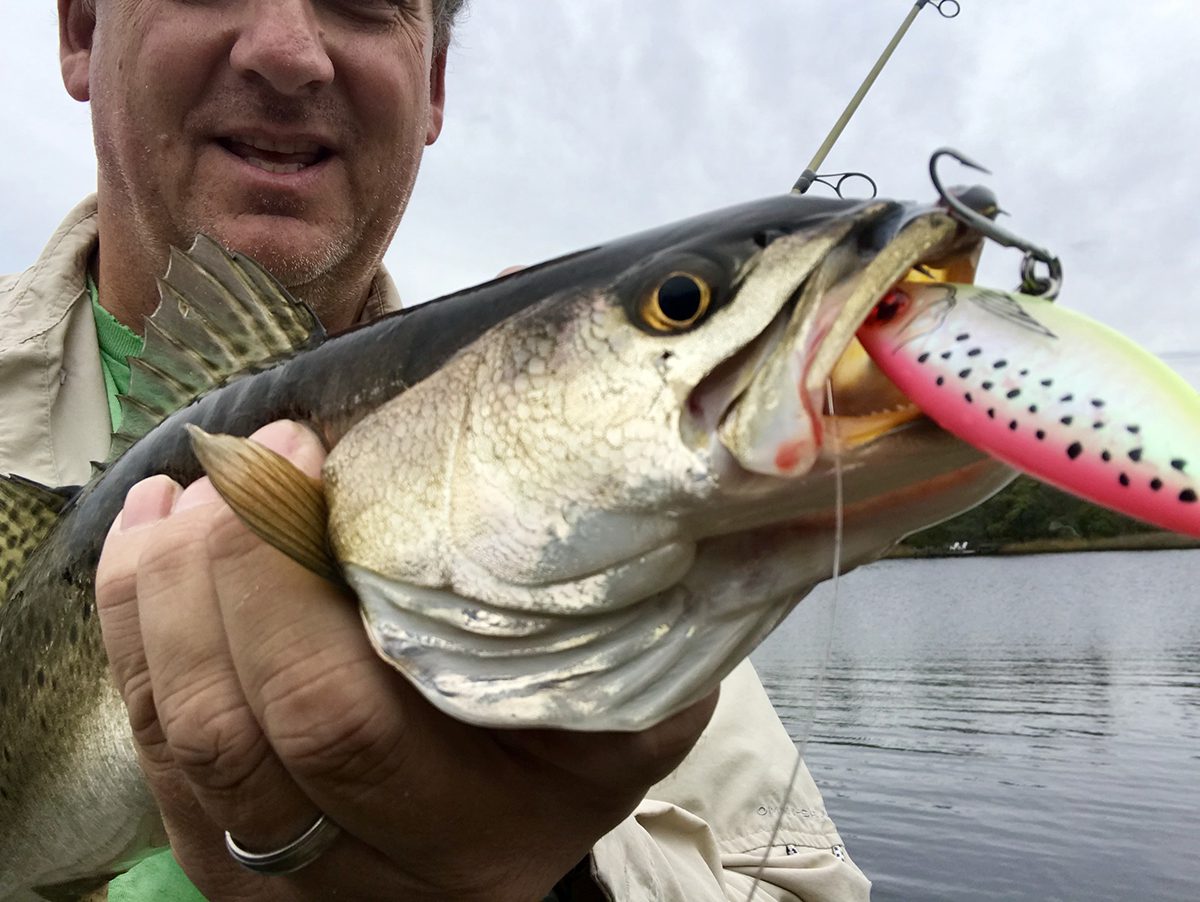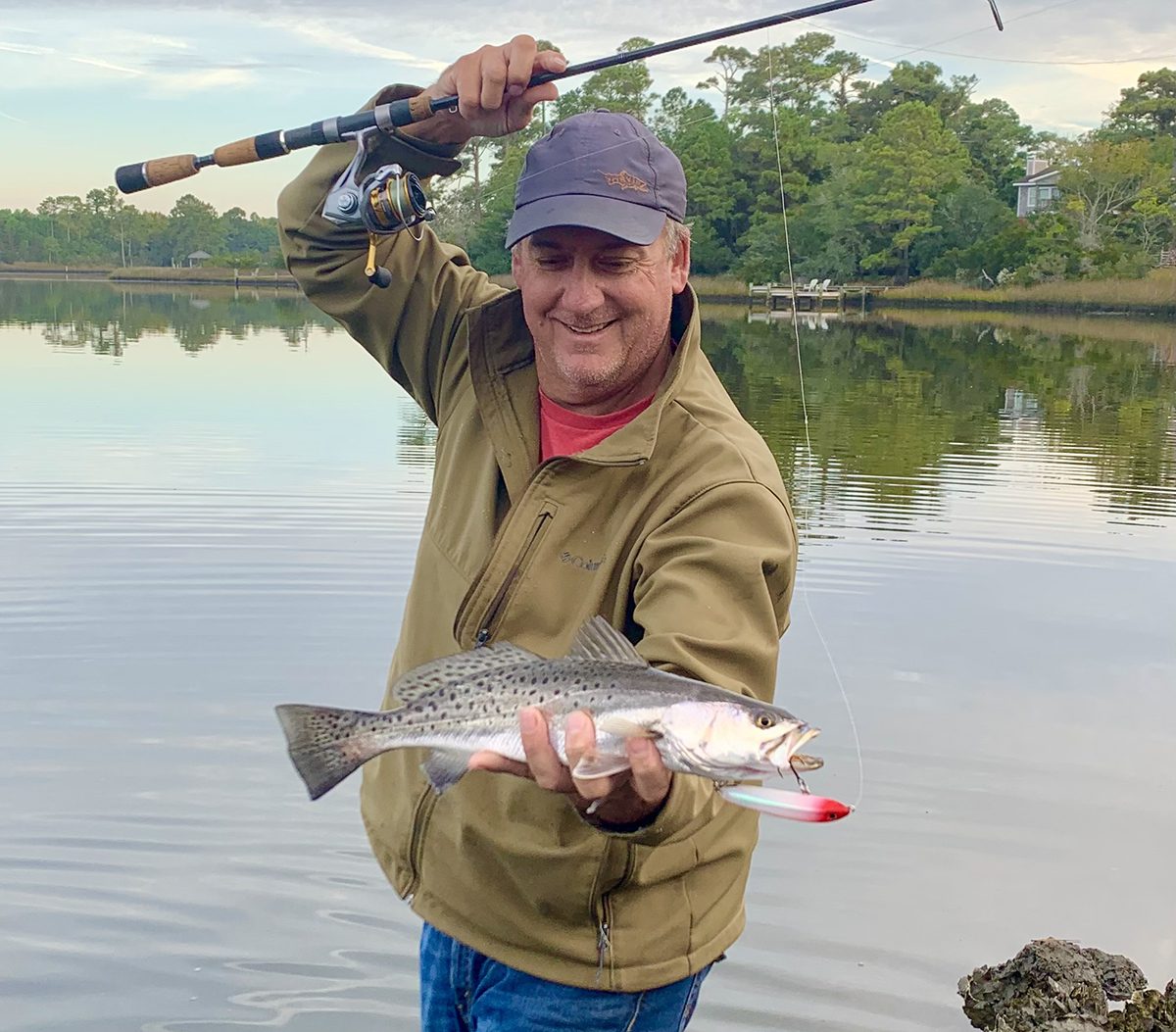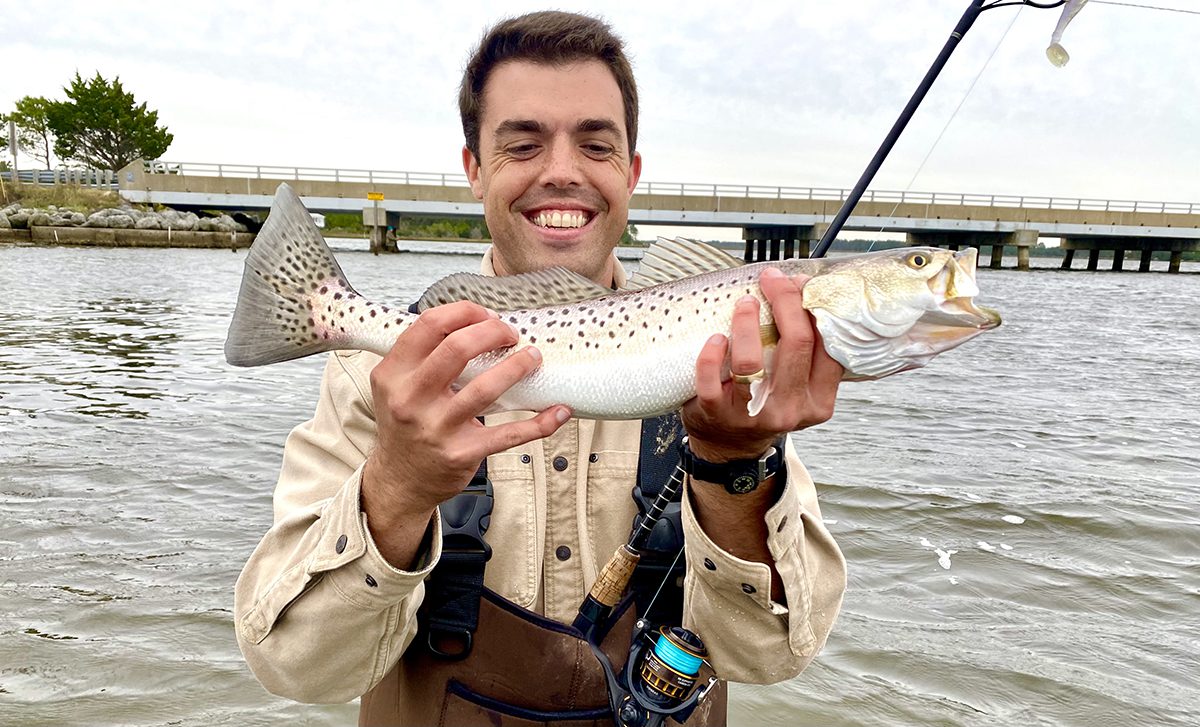
The sun is just peeking over the horizon as another day begins, and you make your first cast.
Your surface plug lands in your favorite creek with a satisfying plop. You begin a twitching retrieve. The plug dances across the surface as the rattle inside makes a clicking sound. Bring it all the way in and cast it again. Twitch, twitch, twitch, click, click, click. Bloosh!
Supporter Spotlight
A trout rolls over on it and is hooked. It’s a big one. It makes a nice run and shakes its head back and forth as evidenced by the big bounces your rod tip makes. You turn your rod to the side to convince her to stay under because when the big girls shake their heads on the surface, hooks tend to pull. Using side pressure, you get her closer and closer until you get your net ready. Slide it under the fish and you’ve done it. A citation trout. Maybe one of the biggest, if not the biggest one you’ve ever caught.

The guy fishing next to you on the rocks congratulates you on a great catch. That’s right, you were not in a boat. You were fishing from the roadbed of a bridge that crosses over a creek.
Every fall, trout move into these waterways in schools, and some of the narrowest creeks can sometimes host thousands of speckled trout, including some truly big ones. Let’s figure out how to catch them.
Sometime in middle October is when I start doing this type of thing. I’ve spoken to guys who do it all year and talk about catching big trout from these places in the dead of night on full moons in summer. I’m not that motivated to sit out in the dark with snakes and who knows what else.
I prefer it when the weather gets a little more autumnal and slows those critters down. Having said that, fall is also the time when there is a chance that hundreds of fish at a time will move into these spots and can really give you a good time. However, we must understand that most of the time it will be a couple bites we’re looking for. But when the school comes, we’ll be ready.
Supporter Spotlight

Look for any place that a creek is crossed by a bridge of some kind. It could be as wide as a bridge over the Atlantic Intracoastal Waterway or as narrow as a creek that winds through a golf course neighborhood. Often they can be hit over with a sand wedge.
Some of these places are obvious, others might need to be searched out. Look at the satellite photos in your area. Look at creeks that proceed away from larger bodies of water. Then look for spots where the road crosses them or comes close. Sometimes you’ll see a worn-down place on the photo. That means it gets used. It’s worth a look.
The best time to be there is, as always, first light. Often, trout will feed actively for the first hour and a half after the sun comes up. After a while though, it may slow down. You can be getting bites pretty regularly, then it stops and you realize you haven’t had a bite in 30 minutes. Get out there early. Get your gear ready the night before.
I use a 6.5-foot, medium-light, fast-action spinning rod with 15-pound braided line and a 20-pound fluorocarbon leader attached with a double Uni knot. Have your knots tied and your things assembled in the car. Bring a landing net. You’ll want it when you hook that big one.
Have two rods rigged with different lures so it’s easy to change.
If you’re going to keep fish, bring a cooler and keep it in the car. Have a rope stringer in your gear bag to use while you’re fishing. Use a backpack or sling pack to carry your lures. Have the lures in plastic trays and organized by type. This makes everything easy to deal with while on the shore of what can potentially be a very uneven creek bank. It’s usually rip rap and setting things down can lead to them getting lost, so I like to keep everything on me.
Have a flashlight if you get out there before the sun comes up. It’s no fun falling on your face with your hands full because you couldn’t see that rock. The walk down to the edge of the water can be a little challenging in some places too. If you have trouble with your balance this may not be something you want to do. When you get into position you want to get a comfortable standing location on the rocks or mud bank so you don’t have to move around too much, along with locating a spot in which you can net that big one.
Now it’s time to make that first cast. What are you going to use?
As stated earlier I like topwater plugs. My favorites are the dog-walking types. I prefer the Rapala Skitter Walk but the MirrOlure Top Dog is also good. A big benefit of them is you can make long casts, and long casts equal more water covered and longer time in the water with each cast.
If I’ve made a bunch of casts and have not gotten any strikes or maybe stopped getting strikes, and I’m pretty sure the fish are there, I will switch to a MirrOlure, MirrOdine or a Rapala Ripstop. There are slow-sinking plugs that have an erratic action that dart side to side on a twitching retrieve. These are the two types of lures I will use most often when fishing roadside.
A jig will work but I’ve found that too often there is some type of sunken structure along the bottom that steals them. A plug will fish above these things and not get hung up as often.
Other options include a plastic shrimp imitation like a DOA or Billy Bay. These are effective but you can’t cast them very far. I prefer to save them for the very narrowest creeks I fish or when I really know the fish are there but won’t hit anything else.
Give a spot 30 minutes or so. After you’ve run through all your lure options, if you’re not getting strikes, you can probably leave. What’s cool is having a run of spots to check. After you’ve been doing this for a while you will identify multiple roadside spots within a quick drive of each other. You can take a whole day going from one to the next. The beauty is that you can also find one close to your home or vacation spot and hit it at first light and be home in time for biscuits.
One last thing that must be addressed, roadside access to the water is disappearing. People who live nearby get frustrated with anglers leaving trash, making noise, drinking and generally being a nuisance. They complain to the local police and “No Parking” signs appear.
Be responsible. If you bring food, carry your trash out. For heaven’s sake don’t leave old fishing line on the ground. No drinking of beer or other alcohol. Be quiet and respectful of the houses around you. If you are there when it’s still dark, don’t slam your car doors. Maybe even bring a trash bag once in a while and clean up your favorite spot.
If you don’t do these things, don’t be surprised when it’s gone.








